Moon
Posted: 4 October 2019
A new home is being built to the south and is between the observatory and a home built a few years ago. The older home has very bright unshielded floodlights that are visible from the observatory:
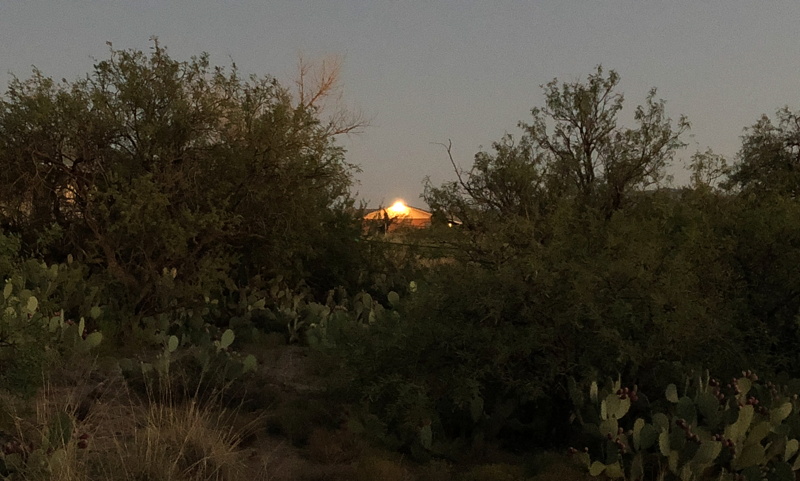
I requested that the homeowner point them down and shield them so that they did not shine beyond his property line. He never acted on my request. But the good news about the new home being built is that it will block those horrible floodlights from shining into the observatory:
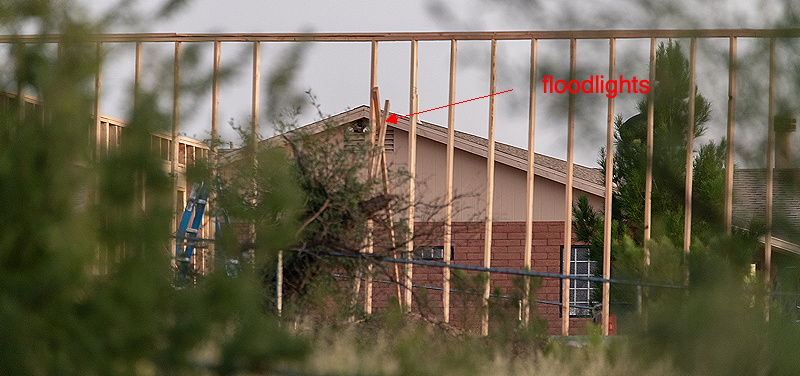
I don't know what outdoor lighting will be installed on the new home, but I wonder what the new homeowner will think of those bad floodlights shining into their home.
|
Open: Thursday, 3 October 2019, 1810 MST Temperature: 94°F |
Session: 1390 Conditions: Mostly clear |
Equipment Used:
12" f/8 LX600 w/StarLock
2" 24mm UWA eyepiece
2" 9mm eyepiece
Camera:
iPhone 8 Plus
D850 DSLR
1824 MST: LX600 ON, StarLock OFF, High Precision OFF.
1827 MST: viewed Venus through tree branches, 102X. Then viewed Mercury, also low in the western sky, 102X. There were clouds along the western horizon.
Next, viewed Jupiter, 102X. The Great Red Spot and the four Galilean Moons were visible.
Next up with the Moon, 102X. I took this handheld afocal 102X photo using the iPhone 8 Plus:
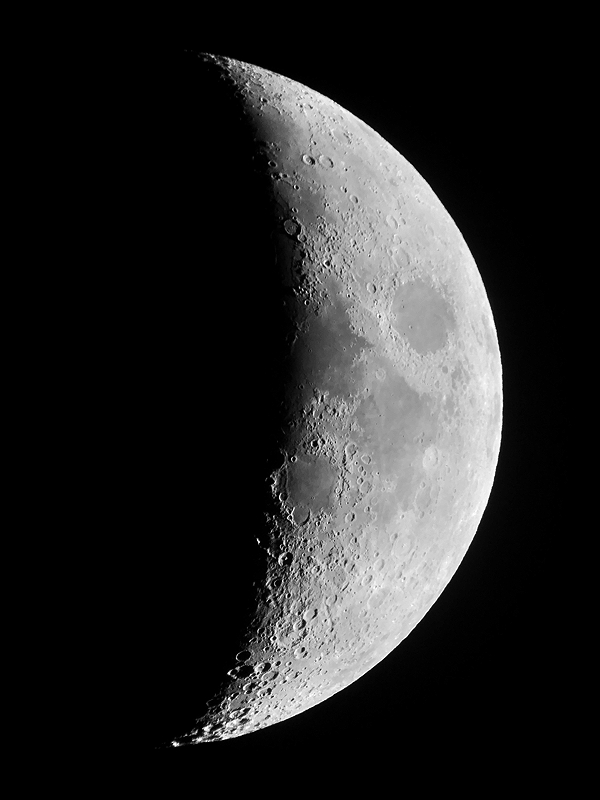
1835 MST: viewed Saturn, 102X. There were two moons visible.
1838 MST: returned to the Moon and did some lunar observing, 271X. I took this handheld iPhone photos, afocal 271X, along the lunar terminator:
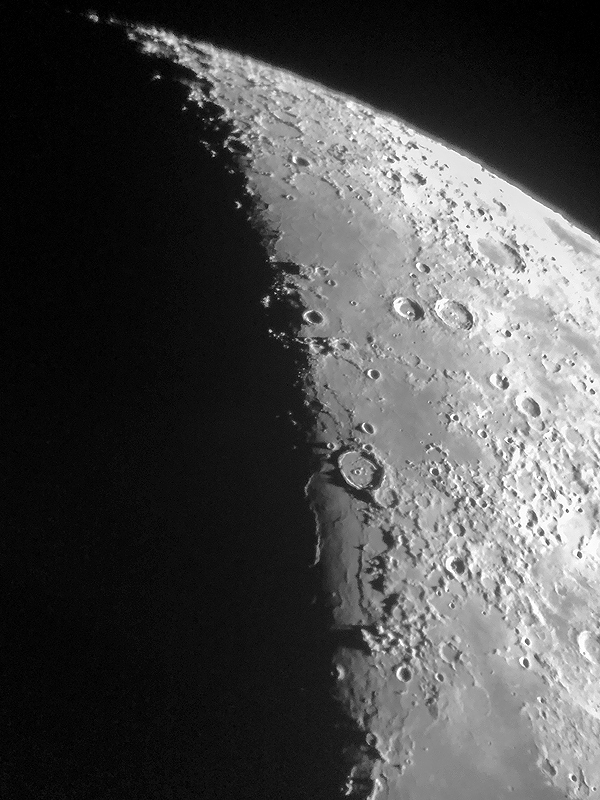
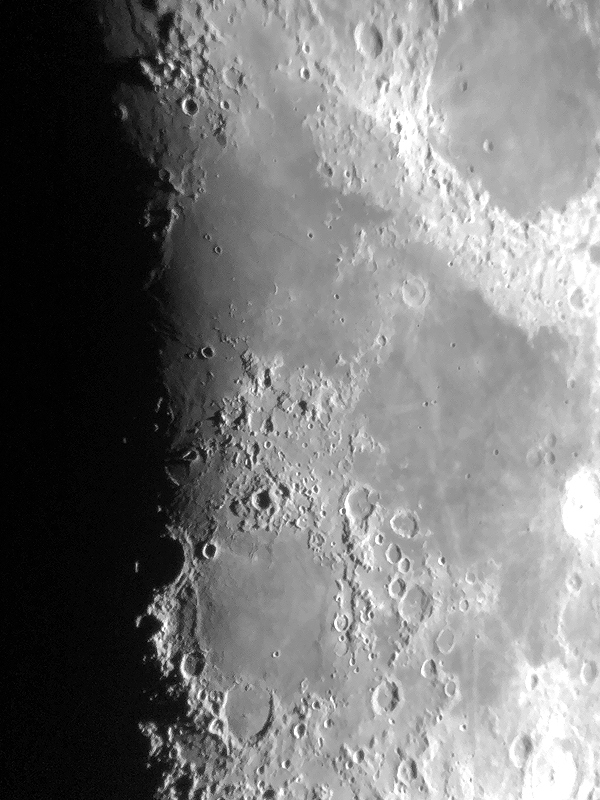
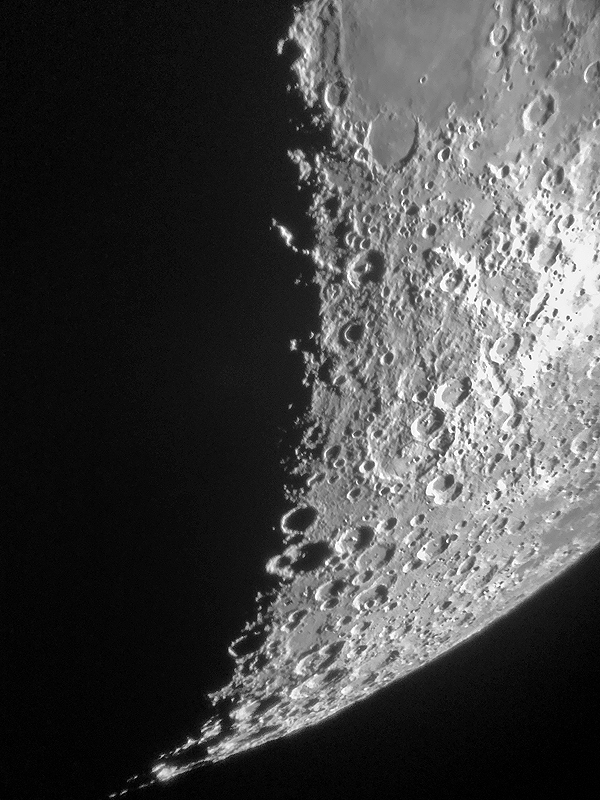
1850 MST: viewed Jupiter and then Saturn, 271X. Four moons were now visible at Saturn. Seeing was not very good.
1857 MST: took this handheld photo of the Moon and Jupiter, which were a little over 2° apart, using the D850 DSLR with a 150-600mm lens (f/6.3, 1/500sec, ISO 1600, FL 460mm):
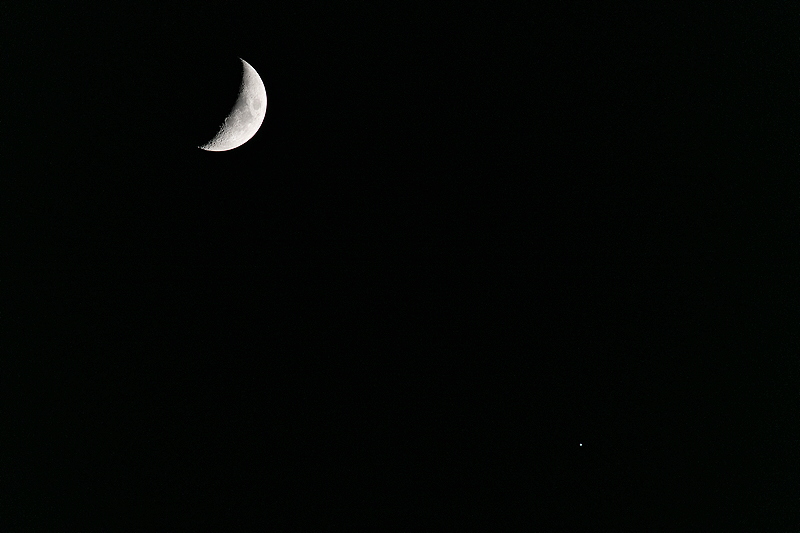
This handheld photo (f/8, 1/60sec, ISO 1600, FL 600mm) of Jupiter shows the Galilean Moons, as seen in the magnified inset. Jupiter is overexposed to show the Galilean Moons.
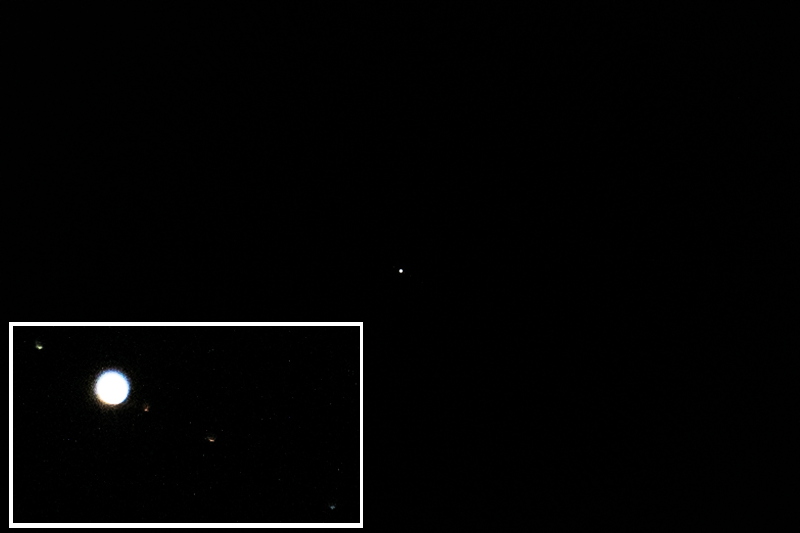
1916 MST: viewed the Moon and Jupiter using 12x50 binoculars. Both were nicely in the same field-of-view. Three of Jupiter's moons were visible in the binoculars; the 4th was too close to the planet.
1924 MST: took a last look at Saturn, 102X.
1925 MST: LX600 OFF.
|
Close: Thursday, 3 October 2019, 1934 MST Temperature: 78°F |
Session Length: 1h 24m Conditions: Mostly clear |
Comments are welcome using Email. Twitter users can use the button below to tweet this report to their followers. Thanks.
Cassiopeia Observatory Home Page
Copyright ©2019 Michael L. Weasner / mweasner@me.com
URL = http://www.weasner.com/co/Reports/2019/10/04/index.html
